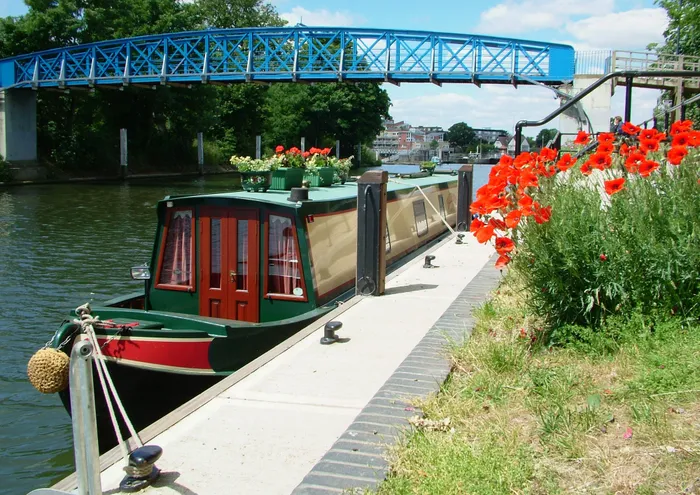Riddle of Britain's exploding fleet solved

London - Bristling with cannon and packed with gunpowder, the warship the London sailed through the Thames estuary in 1665 to fight the Dutch in the English channel.
But she never made it, succumbing to “spontaneous combustion”, explosion, and a watery grave for her 300 crew.
Now, 350 years after the London's final voyage, British archaeologists will recover a crucial item from the wreck which could shed light on what went wrong.
In the operation scheduled for next Wednesday, divers plan to raise a perfectly preserved mid-17th century wooden gun carriage from the wreck of the London, which lies on the seabed about two miles off Southend-on-Sea. Complete with its wheels and axle, the gun carriage is the only known well-preserved English naval equipment of its type to have been found on a 17th-century shipwreck.
“This site is of great importance,” said Charles Trollope, a weapon's historian and fellow of the Society of Antiquaries who has been researching the London's fate.
“English warship wrecks from the 17th century are extremely rare. It is the only surviving exemplar of the spontaneous explosion phenomenon which had affected the major navies of Europe up until that time.”
Mr Trollope says it is likely that the London disaster was caused by the re-use of old artillery cartridges.
When re-used, some of the cotton in cartridges deteriorated into a fine dust, some of which then combined with sulphuric and nitric acids in gunpowder to form a highly explosive substance which much later became known as “guncotton”.
That guncotton dust often came in contact with fresh gunpowder - and friction between the dust and the gunpowder sometimes led to massive explosions.
Dozens of vessels worldwide self-destructed in the 16th and 17th centuries - causing deaths running into the thousands. The English suffered the loss of the Fairfax and the Sussex, both in 1653.
Indeed, in England, it was the London disaster which finally forced the government to ban the re-use of old cartridges. The incidence of vessel self-destruction then reduced dramatically.
Mr Trollope - who studied at Sandhurst - believes that an initial limited 'explosion' took place in the forward magazine, where gunners would have been filling old cartridges with gunpowder.
This would have ignited two tons of gunpowder in the magazine, and sent a much larger heat flash to the main store of 10 tons of gunpowder kept in the vessel's hold.
Archaeological work on the seabed shows that the London broke in half at exactly the location in the vessel where the 10 tons of gunpowder was being stored.
Mr Trollope has even identified what the gunners were doing with the cannon themselves at the moment the explosion occurred.
Of five cannon found, three had been loaded with gunpowder cartridges and shot, and sealed with wooden plugs. One had not been loaded and a fifth was half loaded and had not been sealed.
He believes that the gunpowder store in the hold exploded as one of the gunners was halfway through loading that fifth cannon.
The blast propelled many of the cannon (and no doubt their gunners) out through the side of the ship for some distance. The vessel broke in two with much of the front half being propelled westwards by the blast. It finally came to rest on the seabed 400m away. At the same time the blast totally destroyed much of the central part of the vessel and forced the bottom of the ship downwards into the seabed.
The vessel's “ship bottom” timbers have survived intact - because they were shielded from the blast by a dense layer of more than 20 tons of disused old iron cannon, which were being used as ballast.
“The find is extremely rare. It is the first time we've ever found a 17th-century naval gun carriage on the seabed with all its equipment - including the pulley blocks and many of the gunners implements,” said Historic England nautical archaeologist, Alison James.
Historic England has funded the recovery and study of hundreds of finds from the wreck, which have mostly been brought to the surface by Southend-based volunteer divers working on behalf of the government organisation. These include ammunition, “spare” shoes, a pocket sundial and a finger ring with a seal.
The London was built in 1654-56 for Oliver Cromwell's navy. In 1660 it was one of the small fleet of vessels which brought Charles II back to England at the Restoration.
The Independent